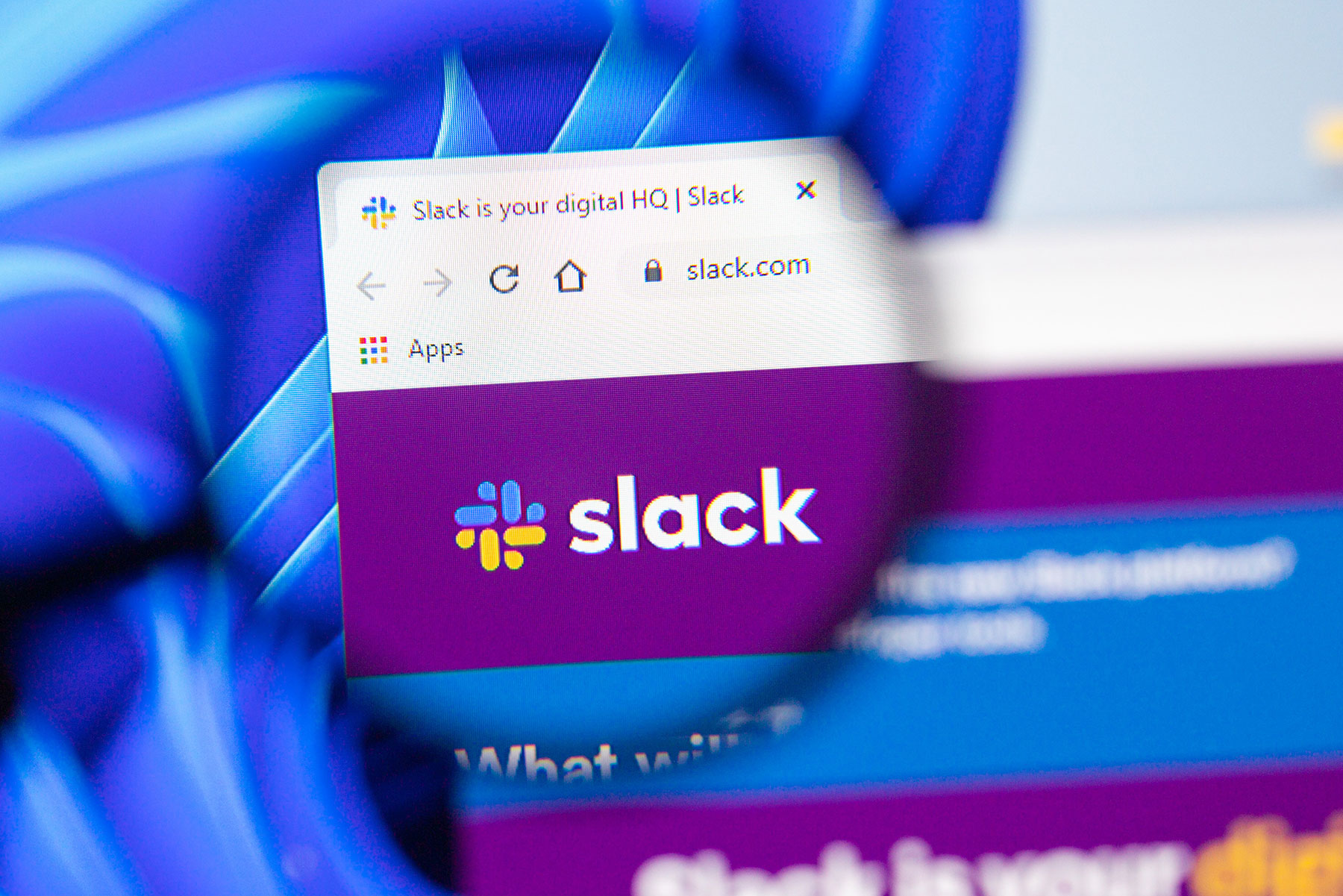Dive into how Slack can enhance student engagement and collaboration, and discover the steps for seamlessly integrating it into your course.
Today’s students expect learning to incorporate digital platforms and mobile accessibility. Discovery research for MIT Sloan’s Classroom of the Future Initiative revealed that our community strongly values easy communication and community building. This aligns with broader trends of students craving interactive, engaging learning (Martin & Bolliger, 2018).
That’s where we turn to Slack and its unique potential to support teaching and learning. Slack is a messaging platform that you can incorporate into your course to enhance student collaboration, communication, and engagement. It has enormous potential–but careful setup is required for successful adoption. This article provides best practices and concrete recommendations to optimize Slack for your course.
Create Your Slack Workspace
To get started, one member of the teaching team will need to create a private Slack workspace for your course. Don’t worry, it’s a simple process. Once the workspace is set up, other teaching team members and students will be easily able to join the Slack workspace through your Canvas site.
Set Up Your Channels
Channels are a great way to organize your conversations on Slack based on topics or functions. Here are some helpful tips to get you started:
- Name your channels clearly: Make sure the names of your channels are descriptive and easy to understand. This will help your team find the relevant conversations they need quickly and easily. Here are some channels to consider:
- #announcements – For important updates
- #questions – For students to ask questions
- #resources – For sharing supplementary materials
- #class-1, #class-2, etc. – For each of your class sessions
- Create private channels when necessary: If you have project groups or sensitive topics that require privacy, consider creating private channels for these discussions. This allows for focused and confidential communication within specific groups. For example:
- #project-group-1, #project-group-2, etc. – Private channels for each project group
- #teaching-team – A private channel for faculty, course admins, and TAs to discuss course logistics, student performance, grading, and other sensitive topics
- Provide a description for each channel: Take a moment to describe the purpose of each channel in its description. This helps students understand the context and purpose of the channel, promoting more meaningful and relevant conversations.
- Set default channels for students: To make it easier for students to join and participate, consider setting default channels that they will automatically join when accessing your Slack workspace. However, please note that only public channels can be set as default channels.
Share Setup Information with Students
You can share key Slack details with students by sending out a Canvas announcement. Essential information to cover includes:
- Joining instructions: Provide a link guiding students through joining the Slack workspace via Canvas.
- Downloading the app: Share a link to install the desktop/mobile app for easy access anytime, anywhere.
- Managing notifications: Share instructions on how to customize Slack notifications.
- Intended Slack uses: Explain how you plan to use Slack (Q&A, collaboration, discussions, etc.) and describe associated benefits (increased engagement, community building, enhanced learning)
- Slack etiquette: Share etiquette tips and behavioral norms (e.g., professional tone, thoughtful replies, constructive feedback delivery)
- Timeline: Inform students that they will be automatically removed from the course’s Slack workspace 30 days after the end of the term.
Here is a sample Slack introduction announcement for your Canvas course (customize as needed):
Hello everyone!
Big news for the upcoming semester: we’ll be using Slack in our course! Slack is a messaging tool that’s going to take our classroom collaboration and communication to the next level. Why use it? Because research has shown that Slack can greatly enhance student engagement, collaboration, and communication in the classroom. Let’s explore together and see if Slack can help us take our learning community to new heights.
- To get started, please visit this link: How to join your Slack workspace through your Canvas course. This page will guide you through the process of joining our Slack workspace.
- You can also download the Slack app for your mobile or desktop. With the app installed, you’ll be able to easily access Slack anytime, anywhere.
- Once you’re in, consider customizing your Slack notifications so you can stay up to date while avoiding notification overload.
To ensure a positive and productive experience, I encourage you to review this Slack etiquette guide. Two important tips to keep in mind are:
- Default to shared channels: Reserve direct messages for private conversations. Use channels for most communication to foster collaboration and ensure relevant information is accessible to the wider group.
- Organized discussions: Use threads to keep conversations organized and prevent clutter in the main channel.
Please note that students will be automatically removed from the course’s Slack workspace 30 days after the end of the term.
I’m excited to incorporate Slack into our course and I look forward to connecting with all of you in the upcoming semester. If you have any questions, please do not hesitate to reach out.
Best,
[Your Name]
Promote Student Buy-In
Gaining student buy-in accelerates Slack adoption (Ross, 2019). Recommended strategies include:
- Tout benefits: Emphasize Slack’s advantages for engagement in your introduction (increased participation, seamless interactions, enhanced community).
- Offer training: Provide onboarding tutorials to increase comfort levels.
- Share examples: Model high-level Slack participation early on.
- Incentivize use: Integrate Slack into course participation grading.
- Highlight standouts: Recognize exceptional Slack contributions publicly.
These are some best practices for supporting student engagement in Slack:
- Craft compelling prompts using open-ended questions, real-world applications, and varied perspectives.
- Spotlight standout posts by reacting, pinning, and praising publicly.
- Assess quality over quantity when grading participation.
Build Community
Slack is a powerful tool that can help build an inclusive and effective learning community for your business school class. Here are some techniques you can use to cultivate a sense of community within your Slack workspace:
- Icebreakers: Facilitate introductions and get-to-know-you activities by using icebreakers. These can be simple questions or prompts that encourage students to share information about themselves and get to know each other better. For example, you could ask students to share their favorite hobbies, or what they hope to achieve in the class.
- Social channels: Dedicate space for casual interactions by creating social channels within your Slack workspace. These channels can be used for non-academic discussions and provide a space for students to connect with each other on a more personal level.
- Polls: Share out fun surveys using Slack polls. These activities can help build a sense of camaraderie among students and provide opportunities for them to engage with each other in a fun and informal way.
By promoting psychological safety and healthy group dynamics, you can help students benefit from participating in this learning community (Hough, 2022). Slack enables the community building and collaboration that students crave (Martin & Bolliger, 2018), making it an ideal tool for fostering an inclusive and effective learning environment in your class.
Conclusion
With intentional setup, engagement facilitation, and community cultivation, Slack can enhance student communication, interactivity, and collaboration (Martin & Bolliger, 2018). This guide provided actionable recommendations to optimize Slack based on proven practices. If you need any help implementing these strategies or are looking for additional resources on using Slack in your classes, don’t hesitate to contact us!
Have you incorporated Slack into your course? Please share your Slack success stories with us. Together, we can showcase the power of Slack for teaching and learning at MIT Sloan.
References
Hough, L. (2022). Why psychological safety matters in class. Harvard Graduate School of Education. https://www.gse.harvard.edu/ideas/news/22/09/why-psychological-safety-matters-class
Martin, F., & Bolliger, D. U. (2018). Engagement matters: Student perceptions on the importance of engagement strategies in the online learning environment. Online Learning, 22(1), 205-222. https://olj.onlinelearningconsortium.org/index.php/olj/article/view/1092
Ross, S. M. (2019). Slack it to me: Complementing LMS with student-centric communications for the millennial/post-millennial student. Journal of Marketing Education, 41(2), 91-108. https://doi.org/10.1177/0273475319833113










